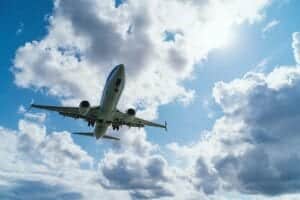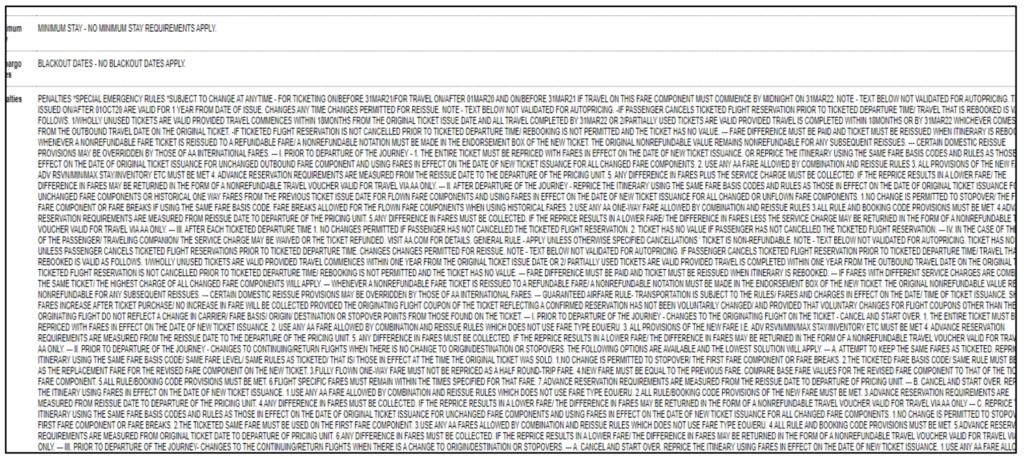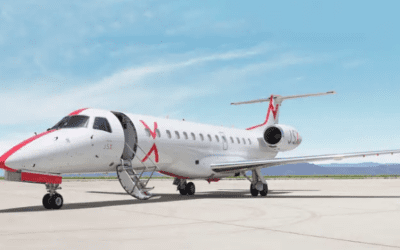As air travel is starting to rebound (at least domestically) low-cost carrier airfares are leading the way.

In this article, I will reference a recent study created by IdeaWorksCompany.com. It is the second article that focuses on how the aviation industry can grow by eliminating travel uncertainty. Airlines can help protect consumers from today’s travel uncertainty, focused on the elimination of travel complexity (quotes noted in this article are from this study). The article deals with change and cancellation policies as well as the complications of airfares.
IdeaWorks studied the complexity of airfares and how they are not part of the booking path.
In this photo, an airfare rules page on a website shows to what lengths carriers will go to obscure the real price and all of the conditions attached to the airfare. Any consumer can find these ALL CAPS pages if they click on the airfare rules pages of most airline websites.
Traditional airlines are too often rooted in the past when vast text files were transmitted to the Airline Tariff Publishing Company by teletype machine. This ancient technical language – never intended to be read by everyday travelers – is now presented through the modern medium of websites.

How can traditional airfares be displayed more transparently?
The following suggestions are offered by the report’s writer, Jay Sorensen, to create a consumer-friendly and more transparent display of fare rules:
- Categorize fares using branding to instantly identify key benefits. Examples include basic, lite, standard, and flex.
- Provide a simple fare matrix in the booking path which includes change and refund policies, along with seat assignment and baggage provisions.
- Allow consumers to “click for details” to view a complete description of the change and refund policies for the fares presented in the booking path.
- Traditional airlines often neglect to include the booking class. This often is instrumental to determine frequent flyer accrual amounts and other benefits.
- Create an easily found page labeled “About our fares.” Present the fare matrix and “click for details” information described above.
- Include a link to “About our fares” in the booking confirmation.
These common-sense suggestions come from one of the top airline analysts in America. Plus, these changes will encourage more travelers to fly to destinations. The rebirth of travel requires these proposals or something similar.
Airlines must discover the power of family and friends when it comes to travel.

The world of friends and family has already become more important. I once knew retired travelers who took monthly trips across the Pacific or Atlantic. Today, they complain that they will no longer receive the perks they have assumed while others paid the business-class airfare. Plus, many business travelers are not flying as much as they once had. During the pandemic, technology has improved dramatically, especially online meeting capabilities. This is music to the ears of low-cost airline airfares and competition.
Teams of salesmen will be hollowed out. Only “closers” will travel and sales support personnel will join meetings virtually instead of in person. Many technical repairs can be done remotely as technology has improved. Internal business meetings may be shifted to Zoom or Teams video conferencing.
The frequent flier programs must consider friends-and-family travel as a major income-producer.
The study concluded that business travel will be replaced with “other member categories.” Low-cost airline airfares are exactly what the public now desires as frequent flier perks are ending.
This group always poses a challenge because they have not generated sufficient airline revenue to justify expenditures for more marketing attention and program perks. Within this giant category are leisure travelers, families, and groups of friends. Flight activity for everyone has slumped during the pandemic, but vacationers and those visiting friends and relatives (VFR) have certainly returned in larger numbers than those traveling for business purposes.
Pooling frequent flier miles may allow the friends-and-family category to grow exponentially. Families can be linked and the rules can be written to favor the airlines but offer something new for this new category of traveler. Already, many loyalty programs are experimenting with finding a way to expand the world of elite fliers to “less frequent fliers.”
Some airlines have begun to allow travelers to pool miles. The number of program members who pool miles ranges from 5 to 8. Hotels have redesigned their loyalty programs to attract new member categories. Other airlines have created subscription services that generate extra mileage bonuses, free checked baggage or allow entrance to airport lounges.
Besides introducing more programs that allow more loyalty program benefits, the industry should be kinder to customers.

Actions like these often sound much better than they are. However, the flying public still accepts the restrictions even when it is not what they were led to expect.
Mr. Sorensen ends his report with a warning to airlines and other travel companies.
You encourage consumers to choose your airline and reconnect with the world by treating them as you would want to be treated. Frontline employees know very well the trauma created by restrictive terms and conditions masquerading as promises of flexibility. That consumers are too often treated like cattle in the booking path – without proper access to fare rules – removes credibility, punishes revenue, and creates expense. The pandemic has proven the airline industry can meet very stiff challenges. That same effort is now required to win back consumers to the joy and magic of airline travel.
READ ALSO:
Hate extra fees? Make sure to file comments with the CFPB
73 percent of sick plane passengers would fly, flight changes too costly

Charlie Leocha is the President of Travelers United. He has been working in Washington, DC, for the past 14 years with Congress, the Department of Transportation, and industry stakeholders on travel issues. He was the first consumer representative to the Advisory Committee for Aviation Consumer Protections appointed by the Secretary of Transportation from 2012 through 2018.



